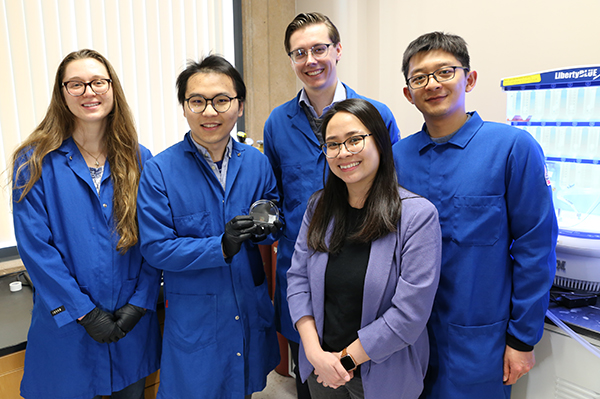New Biointerface Technology Could Lead to Light-Triggered Cardiac Devices

April 3, 2024 – UC Irvine engineering researchers have designed a new biointerface technology for organizing engineered cardiac tissues that could pave the way for future light-triggered, life-saving cardiac devices such as pacemakers.
Herdeline Ann Ardoña, assistant professor of chemical and biomolecular engineering, says that light-based stimulations are better because it could mean that next-generation cardiac devices could be light-sensitive and minimize the need for invasive, wired instrumentation.
“The convention in the field is to use metal-based electrodes to electrically stimulate cardiac tissues,” said Ardoña. “Here, we built current-generating interfaces with organic-based soft material components that are light-responsive, and with well-defined surfaces as an interface for cardiac muscle cells.”
The cardiac cell-compatible technology generates electrical currents in response to pulsed light stimulation. It is the first example of a cardiac photoconductive biointerface that is powered by soft material components (peptides and polymers) and is also capable of controlling biomolecular assembly and the organization of cardiac cells cultured atop devices. The findings are featured in Advanced Materials’ Rising Stars special collection.
Their technology also holds promise for higher spatial resolution stimulation when working with lab-based models. Lab-grown tissue models are beneficial for studying mechanisms of diseases and natural biological processes, or for performing high-throughput drug screening or toxicology studies.
The lead author of the paper is Ze-Fan Yao, a postdoctoral researcher from Ardoña’s group. According to Yao and Ardoña, “In addition to achieving a photoresponsive biointerface, our study with these nanoscale-featured surfaces that drive the assembly of semiconducting peptides also revealed insights on the sensitivity of cardiac tissues to the molecular composition and order of the biomolecules that comprise its microenvironment.”
The paper also features UCI graduate students in chemical and biomolecular engineering, and biomedical engineering: Yuyao Kuang, Emil Lundqvist and Natalie Celt, along with UCI materials science and engineering alumnus Xin Fu ’23, Ph.D., from Professor Emeritus Albert Yee’s group. The work was funded by the National Heart, Lung, and Blood Institute and supported by a seed grant from UCI's Center for Complex and Active Materials.
– Lori Brandt
